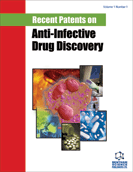Abstract
The relentless rise in antibiotic resistance among pathogenic bacteria and fungi, coupled with the high susceptibility of burn wounds to infection, and the difficulty of systemically administered antibiotics to reach damaged tissue, taken together have made the development of novel topical antimicrobials for burn infections a fertile area of innovation for researchers and companies. We previously covered the existing patent literature in this area in 2010, but the notable progress made since then, has highlighted the need for an update to bring the reader up to date on recent developments. New patents in the areas of topically applied antibiotics and agents that can potentiate the action of existing antibiotics may extend their useful lifetime. Developments have also been made in biofilm-disrupting agents. Antimicrobial peptides are nature’s way for many life forms to defend themselves against attack by pathogens. Silver has long been known to be a highly active antimicrobial but new inorganic metal derivatives based on bismuth, copper and gallium have emerged. Halogens such as chlorine and iodine can be delivered by novel technologies. A variety of topically applied antimicrobials include chitosan preparations, usnic acid, ceragenins and XF porphyrins. Natural product derived antimicrobials such as tannins and essential oils have also been studied. Novel techniques to deliver reactive oxygen species and nitric oxide in situ have been developed. Light-mediated techniques include photodynamic therapy, ultraviolet irradiation, blue light, low-level laser therapy and titania photocatalysis. Passive immunotherapy employs antibodies against pathogens and their virulence factors. Finally an interesting new area uses therapeutic microorganisms such as phages, probiotic bacteria and protozoa to combat infections.
Keywords: Biofilm disrupting agents, burn infections, drug potentiators, generators, passive immunotherapy, phototherapy, therapeutic microorganisms, topical antibiotics.
 57
57





















